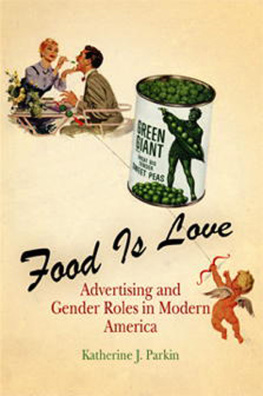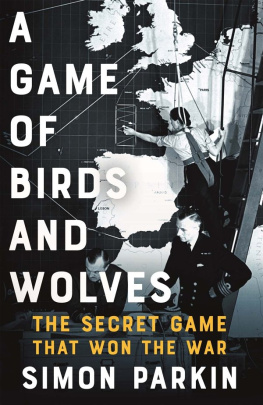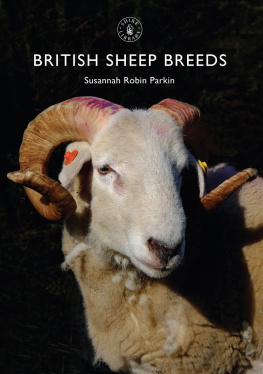RAY PARKIN ON A POWS SURVIVAL
MUP TITLES BY RAY PARKIN
H.M. Bark Endeavour
Ray Parkins Wartime Trilogy
Ray Parkin
On a POWs Survival
MELBOURNE UNIVERSITY PRESS
An imprint of Melbourne University Publishing Ltd (MUP Ltd)
187 Grattan Street, Carlton, Victoria 3053, Australia
mup-info@unimelb.edu.au
www.mup.com.au
First published 2005
Text Ray Parkin 2005
Design and typography Melbourne University Publishing Ltd 2005
All author royalties from this edition will be donated to the Weary Dunlop Foundation
Ray Parkins Wartime Trilogy first published as three separate volumes (Out of the Smoke, Into the Smother and The Sword and the Blossom) by The Hogarth Press in 1960, 1963 and 1968.
Text and illustrations Ray Parkin 1960, 1963, 1968, 1999
This book is copyright. Apart from any use permitted under the Copyright Act 1968 and subsequent amendments, no part may be reproduced, stored in a retrieval system or transmitted by any means or process whatsoever without the prior written permission of the publishers.
Designed by Guy Mirabella
Typeset in Australia by J&M Typesetting
Printed in Australia by Griffin Press
National Library of Australia Cataloguing-in-Publication entry
Parkin, Ray, 1910
Ray Parkin on a POWs survival
ISBN 0 522 85196 7.
1. Parkin, Ray, 1910 . 2. World War, 19391945 Personal narratives, Australian. 3. World War, 19391945 Prisoners and prisons, Japanese. 4. World War, 19391945 Naval operations, Australia. 5. Prisoneres of war Japan Biography. 6. Prisoners of war Australia Biography.
I. Title. (Series : MUP masterworks).
940.547252
About this book
The MUP Masterworks series celebrates distinguished Australian writers and ideas. This volume, the second in the series, is drawn from Into the Smother, Ray Parkins journal of his time as a prisoner of war working on the Thai-Burma Railway in 1943 and 44. Written and drawn on whatever scraps of paper came to hand, hidden first by Parkin and then by his friend and commanding officer Lieutenant-Colonel Edward Weary Dunlop, it tells the story of the POWs daily struggle for survival under the Japanese.
Keeping such a journal was a summary offence: discovery would have resulted in death. But Ray Parkin was a remarkable survivor. Joining the Australian Navy in 1928, he served on the HMAS Perth from her commissioning in 1939 until her sinking off Indonesia in 1942. He became one of Dunlops Thousand, a group of Australian POWs led by Dunlop, first on Java and later in Thailand. After the railways completion, Parkin and other POWs were shipped to Japan, and when the war ended, he was working in an underground coal mine about forty miles from Nagasaki.
Into the Smother was first published in 1963 by the Hogarth Press, London, at the instigation of the writer and soldier Laurens Van Der Post, a fellow POW. In 1999, Melbourne University Press republished it as the second volume of Ray Parkins Wartime Trilogy. In his writing, and later in the books editing and publication, Parkin consciously strove to present the POW experience just as it was, without dramatic effect.
For the bare facts themselves are dramatic, and demand to be recalled: almost 13,000 Allied POWs and 72,000 forced labourers from Burma and other Asian countries died in the course of the Thai-Burma Railways construction, from ill-treatment, privation and disease. As Parkin observed in the opening paragraphs of his journal: We are in the hands of an unpredictable enemy who has already, in sickening fact, shown us the power of life and death he holds over us.
This extract from Chapters 4 to 7 opens as Dunlops Thousand, after a three-week journey by ship and train, arrived at their destination, a work camp deep in the heart of the Thai jungle, known as Konyu 3.
MUP thanks John Clarke for his assistance in the completion of this project.
CONTENTS
Konyu January
We are now building our camp. Clearing is going on all day. Fires burn, smoke curls; the trees are blue cut-outs on a blue ground, and the greens of the bamboo are a sunny yellow. The laciness of their leaves against the sky is as fine as that of a brides brand-new nightdress. Axes ring, trees crash, and bamboos are torn out of their clumps with the noise of ripping thorns. Men call, Oh-h-h... HO! H-a-a-U-U-LL! as they drag and work. They are stripped to hats, boots and shorts. They are red and bronze and moving: dark in the shadows, and rich in the sun.
Above and behind us to the north runs a high, jungle-treed ridge in the greens, browns and reds of the Australian bush. Its sharp edge shows against the white cumulus which just crowns it: the clouds seem to climb no higher in this dry season. South, across the river in its deep channel, lies another mountain. The river is a branch of the Menam and is called the Kwai Noi. To the south, other prisoners are at work on banks, cuttings and bridges, bringing the railway up from Bampong. Eventually it will run westward into Burma, on to Moulmein or Rangoon.
There is much to admire in the country. In spite of our situation, there is something here which is giving my heart a lift: perhaps it is the much good against which to contrast our little evil, giving a sense of proportion.
Monkeys pipe high on top C and sound like the rotary sirens on tugs or destroyers. There is bird music, but we dont often see the birds. At dusk there are graceful flights of geese and heron, and others I dont know. During the afternoon, as the sun swings to the southward, the camp is back-lighted. The green and blue trees are ringed with an edge of green-gold light, and the smoke is a floating luminous powder. The clouds, too, have shadowed hearts and haloed edges. Large leaves float, capsize and tumble continually earthwards, lazily, on to the beds of men whose camp is rows of gauzy mosquito nets strung up like the buildings of a city on bamboo poles. Great vines writhe and twine and grip the tall straight-columned trees, whose pink-grey trunks blend against the blue atmosphere. The grip has grown so tight that in places there is a bulge of strangulation.
In the night the trees are lighted by the rich ochre glow from the many fires. They stand drawn perfectly in monochrome by firelight on the blue-black ground of the farther unlighted trees which show as pitch against the faintly luminous sky. The line of the mountain across the river shows its shape only by obscuring the stars. The stars are clear in a faultless atmosphere. At the edge of the clearing, two clumps of bamboo, rising nearly one hundred feet, converge symmetrically in a great curve. At the moment they are simple lines of highlight on black, and they make a perfect Gothic arch.
Kwai River at Konyu January, 1943
Beneath this great arch, as the fires illuminate it, a few bamboos, broken, have fallen in from the sides. This gives a strong suggestion of the pattern of a stained-glass window, whose motif is inscrutable. The altar is simply the diffused light hung low on the curtain of smoke. It is majestic and the black depth of it all is full of religious mystery. The blackness, the depth, the height, and the remote stars above is the Presence of... whatever it is man longs for. You can go to sleep with this feeling cuddled in your blanket... or you neednt.














